Monday Morning Quarterback: Introducing The MMQB All-Time NFL Draft

Today we kick off a project that’s been a long time coming. The executive editor of The MMQB, Mark Mravic, suggested a couple of years ago that we do an all-time draft of pro football players. How cool would it be, he thought, if we got smart football people together and conducted a draft from the pool of every one of the more than 23,000 men who have played in the NFL, AFL and All-America Football Conference? How cool would it be if we made teams with Joe Montana throwing to Don Hutson, or with Von Miller chasing down Jim Brown from behind? Pretty cool.
Finally this year I took on the organization of The MMQB All-Time NFL Draft. You’ll find the results and related content—the round-by-round list, the team rosters, bios, galleries and more—our special draft hub, and during the week we’ll have follow-up stories on the project—how the teams would look on the field, who didn’t get drafted and why, and more. There’ll be time in the weeks ahead to spend on training camp previews and other news; today’s column will be dedicated to this most fanciful of fantasy football drafts.
There are a hundred ways to tell this story. I choose the AP style. Just the facts, as the Associated Press would have covered it. Twelve competitive general managers who had the most pleasant drafting task ever—picking 300 all-timers to form 12 Super Teams—treating it like it was very real. Here, the draft picks, quotes and other takeaways about this very fun two-hour event.
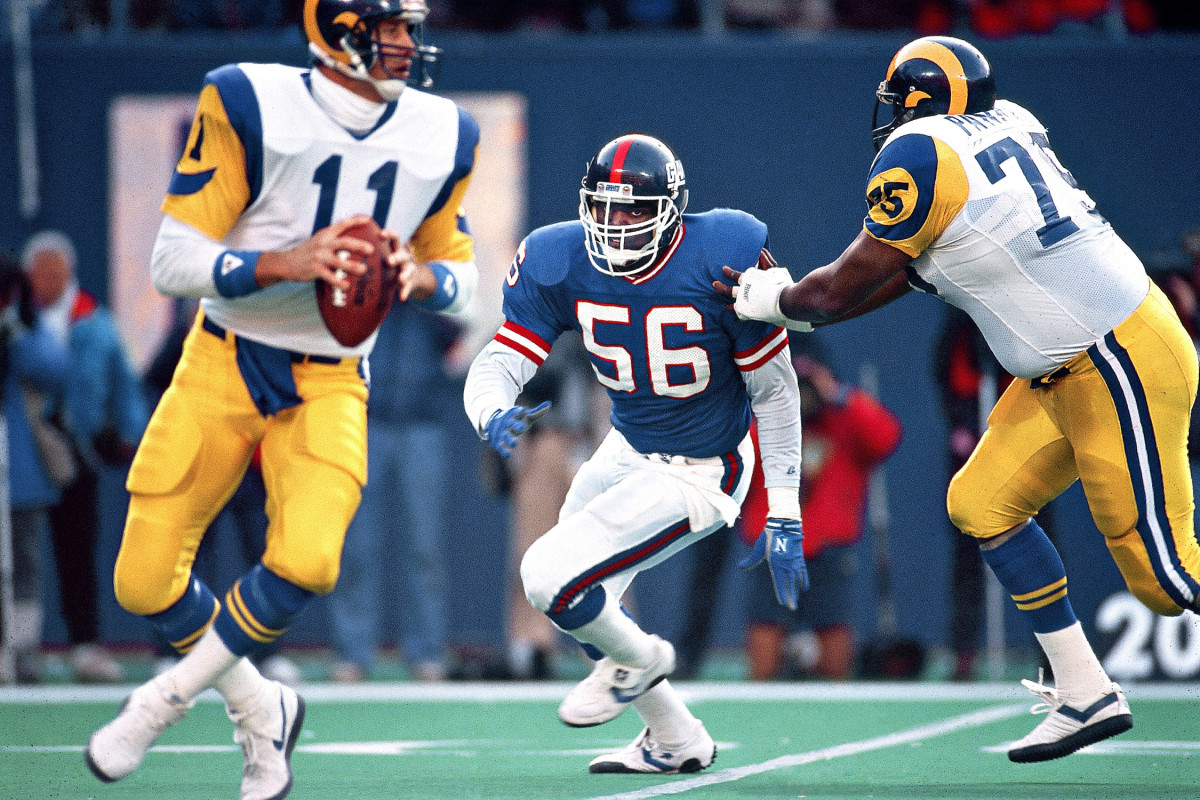
NEW YORK — After The MMQB’s All-Time Draft kicked off with a logical trio of the most storied players in NFL history—Lawrence Taylor, Joe Greene and Johnny Unitas—going one, two and three, the fourth pick of the draft, by Hall of Fame quarterback and Hall of Fame voter Dan Fouts, elicited wows from the 11 other general managers drafting by conference call from around the U.S.: Raiders punter Ray Guy.
A punter? Fourth overall, with players from 97 years of football history to choose from?
“I really wanted Unitas,” Fouts said afterward. “But he was taken. So I thought I would shock the world. Not that many punters had the impact Ray Guy did on a game. He came into the league the same year as me [1973], and I watched him affect games for so many years. He was such a weapon. And I thought I could get a great quarterback down the road, and I did [Terry Bradshaw, in round five].”
Fouts finished with a fascinating team, led by several of his former Chargers teammates, as well as kicker Jan Stenerud in the fourth round and the electric Bo Jackson, whose career was foiled by a hip injury in 1991, taken in round 20. But Fouts, like the other GMs, also drew from deep into football’s past and drafted across the range of football history. One of his offensive linemen, Bruiser Kinard, began his career in the 1930s. Another, Bruce Matthews, finished his in the 2000s. Each team was an amalgam of the new and the old.
For the 25-round draft, the mandate was that each team had to field an 11-man offense, 11-man defense, plus a kicker, punter and wild card player—either a special-teamer or another favorite of the drafter. (There was no requirement to draft a kick returner.) The 12 architects all had long pro football pedigrees:
• Ernie Accorsi, former GM of the Colts, Browns and Giants.
• Gil Brandt, father of modern football scouting. Has worked in NFL for the past 58 years.
• Joel Bussert, for 40 years the NFL’s vice president of player personnel.
• Dan Fouts, Hall of Fame quarterback, current Pro Football Hall of Fame voter.
• Rick Gosselin, longtime pro football columnist, and king of the mock draft.
• Joe Horrigan, Pro Football Hall of Fame executive vice president and chief archivist.
• Peter King, 33-year pro football writer, editor-in-chief of The MMQB and Hall of Fame voter.
• Bob McGinn, who just finished a 38-year run covering the Green Bay Packers.
• Bill Polian, six-time Executive of the Year and a Pro Football Hall of Fame GM.
• John Turney, editor of Pro Football Journal and respected football historian.
• Ron Wolf, architect of three NFL playoff teams, and Pro Football Hall of Fame GM.
• John Wooten, 10-year NFL guard, 23-year NFL scout, head of The Fritz Pollard Alliance.
The draft order was determined by pulling the names out of a hat: 1 Bussert, 2 Wolf, 3 Gosselin, 4 Fouts, 5 Turney, 6 Brandt, 7 McGinn, 8 Horrigan, 9 King, 10 Polian, 11 Wooten, 12 Accorsi.
After the 25 rounds were completed, there was a one-round head-coach draft, in reverse order. Accorsi selected first (he chose Vince Lombardi), followed by Wooten, Polian, King, etc.
In this All-Time Draft, it was permissible to select a player who played both ways back in the day and to use him both ways on these rosters. But a player could only count at one spot on offense and one spot on defense. For instance, you couldn’t pick Ronnie Lott as a cornerback and safety, though he played both during his career. But you could pick Sammy Baugh as a quarterback, safety and punter, because he could theoretically do all three jobs in a single game—and most often did.
The exercise was meant to honor all eras of pro football. An All-Decade player in the ’50s, for instance, should have been considered on the same footing as an All-Decade player in the ’90s. Wolf’s philosophy was going to be to take the guys he saw whom he loved, with an emphasis on the pre-modern players. Polian said he wouldn’t take any Colts, Bills or Panthers (the teams he molded) “because if I pick one, then I’ve got to answer why I didn’t pick all the others.” Gosselin loves the All-Decade teams, and he followed those, mostly, plus considered Hall of Fame pedigree. Brandt, in his Dallas home, made a board with position-by-position rankings.
“I’ve put hours into this,” Brandt said. “It was a labor of love.”
• The MMQB All-Time NFL Draft: Gil Brandt’s complete roster
Bussert needed just four of his allotted 30 seconds to kick off the first round, selecting Taylor, the most dangerous pass-rusher of all time. “For me it was a no-brainer,” Bussert said, “because even before the order came out, I said if I have a chance to get LT, I am going to take him. When you talk about the greatest defensive player, it’s almost always LT.”
Wolf, elected to the Hall of Fame in 2015, was clearly set on building a defensive powerhouse, and he started with the cornerstone of the Steelers’ 1970s dynasty, defensive tackle Greene. Then Gosselin chose the generational Unitas as the first quarterback picked.
“If he was gone, I would have taken Jim Brown,” Gosselin said. “So either the game's greatest quarterback or the game's greatest player. Those were my preferred options. If both were gone by the time I went on the clock, I would have taken Tom Brady. Heck of a consolation prize, right?”
Brady, as it turned out, lasted until the ninth pick, which was one of the upsets of the draft. But the biggest was Fouts drafting Guy fourth overall. Turney, the football historian, followed by choosing Bengals left tackle Anthony Muñoz, likely the best ever at the position, and Brandt happily chose the running back who dominated the game for a decade in the late ’50s and ’60s, Jim Brown of Cleveland, with the sixth overall pick.
At seven, McGinn chose a player he covered in the Packers’ glory days of the ’90s, defensive end Reggie White, the first great unrestricted free agent in NFL history. Like the GM (Wolf) he covered for many years, McGinn went heavy on defense early. At eight, Horrigan honored history with the first wide receiver to come off the board: Don Hutson, a former Southeastern Conference 100-yard dash champion who caught 99 touchdown passes for the Packers from 1935 to 1945. When Hutson retired, he had three times as many TD catches as any other player in NFL history, and the record of 99 stood for 44 years.
King, who had hoped Muñoz would last until nine, happily settled for Brady, whom he felt established himself as the greatest quarterback of all time with his record 25-point comeback in his record fifth Super Bowl victory last February. That pick started a run on quarterbacks: At 11, Polian, respecting history, chose Cleveland’s Otto Graham, who led his Browns team to seven pro football titles in a 10-year post-World War II career. At 11, Wooten tabbed Joe Montana, winner of four Super Bowls and the ultimate cool-under-pressure player. At 12, Accorsi finished the first round by taking the most ironic pick of the entire draft, John Elway.
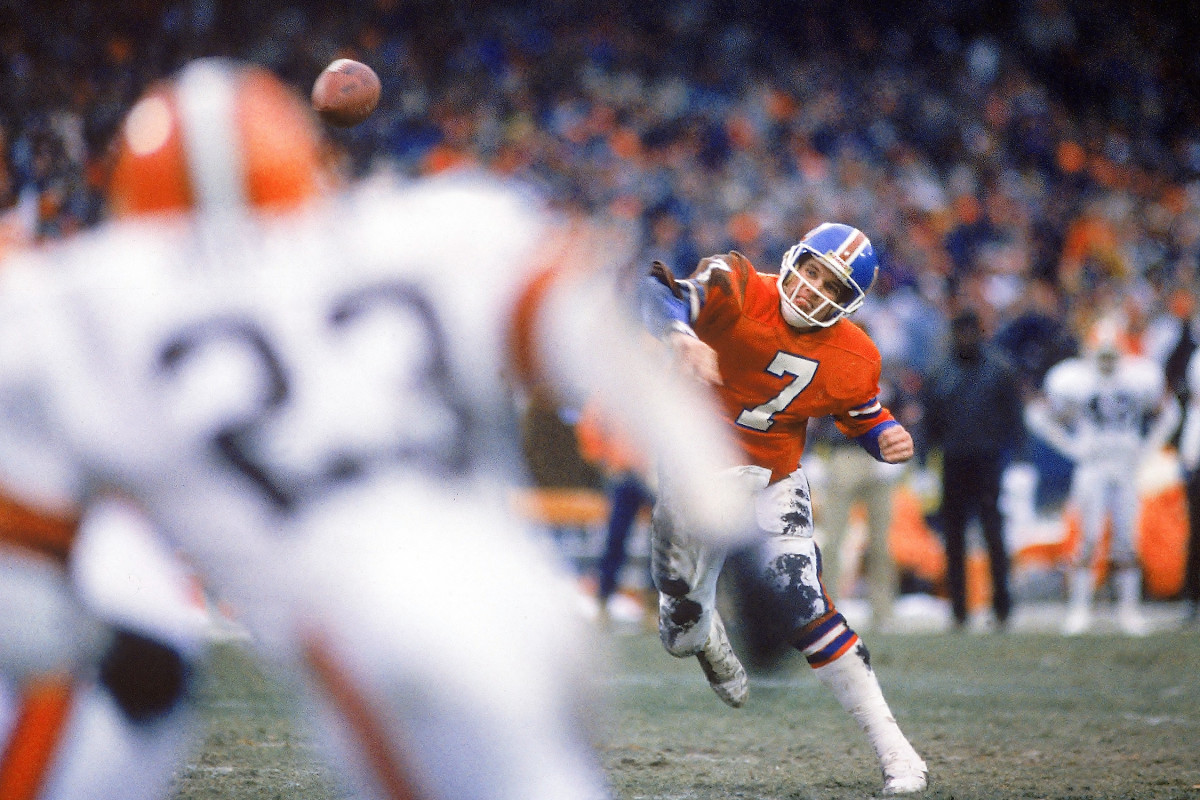
In 1983, Accorsi was the GM of the Baltimore Colts, who had the first pick in the draft. But John Elway did not want to play for then-Colts coach Frank Kush, and though Baltimore picked Elway number one and appeared ready to call his bluff, owner Robert Irsay ordered Elway to be traded. Against Accorsi’s wishes, the Colts traded Elway to Denver for a package of picks and players that, putting it mildly, did not stack up to Elway. (Though one of them, tackle Chris Hinton, became a Pro Bowl player for the Colts.)
“I drafted John Elway in 1983 and he didn’t play for us, and that’s why I quit,” Accorsi said after taking Elway a second time. “I resigned from the Colts because the owner traded him without me knowing it. I’ve gotten to know Elway pretty well, and I sent him an email and told him about this draft.
“I said, ‘John, I just drafted you in this draft. However, you will be surrounded by 10 Hall of Famers on offense, and your coach is not Frank Kush, it’s Vince Lombardi … And I am the owner, not Irsay. So will you play this time?’
“And he wrote me back and said, ‘Yeah, I’ll play on that team! No question about it! We will win some championships.’”
Rounds two through five featured players who easily could have been first-rounders. Even picks made in round 10 wouldn’t have been stunners if they’d gone in the first round.
• Bussert chose Dallas quarterback Roger Staubach to start round two and got the leading sacker of all time, Bruce Smith, at the top of round three.
• Wolf picked defensive tackle Bob Lilly (to play next to Joe Greene) and cornerback Deion Sanders in rounds two and three, then followed with two rock-solid defenders, Gino Marchetti and Mel Blount. “I don’t know how you’re going to score on this team,” Wolf said. His quarterback—surprise—is Brett Favre, chosen in round 10. In his first major personnel move as Green Bay GM in 1992, Wolf traded a first-round pick to Atlanta for Favre, who’d just spent his rookie year warming the Falcons’ bench.
• Gosselin, fitting his defensive bent, got his top defensive end (Deacon Jones) and top middle linebacker (Dick Butkus) in rounds two and three.
• Fouts, minus himself, recreated the explosive Chargers teams of the ’70s and early ’80s, with Kellen Winslow at tight end and Charlie Joiner and John Jefferson at wideout.
• Turney got Jerry Rice in round two and Aaron Rodgers and Von Miller in rounds eight and nine, respectively. “If Aaron Rodgers continues on this pace he will throw his 400th TD pass before he throws his 100th interception,” Turney said. He did a good job melding the new with the old throughout the draft. In addition, he pulled off two trades, one of them coach-for-coach: Turney acquired Bill Belichick from King, with King using the choice he received to pick Chuck Noll.
(An odd trade. King actually chose Belichick with the fourth pick in the one-round coaches draft, then looked to trade the five-time Super Bowl-winning head coach. “I just wanted Brady to play for someone else, to keep it interesting,” King said. “I had a brain lock—I should have picked Paul Brown. But Noll is a terminally underrated coach and franchise architect, and I just think he would have loved coaching Tom Brady.”)
• Brandt got great value throughout, even after taking Brown and Walter Payton in the first two rounds. Best example: Randy Moss in round 12.
• McGinn will have a strong defensive core. After White, he chose Hall of Famers Ronnie Lott, Lee Roy Selmon and Junior Seau. It was a shock to see McGinn steal Dan Marino as his quarterback midway through round 10.
• Horrigan snuck Peyton Manning from the pack with the 20th overall pick, then made a couple of interesting backfield selections: Fullback Jim Taylor (round eight) will block for the leading rusher of all time, Emmitt Smith (round 13).
• King got one of his favorite players ever, running back Gale Sayers, in round two, followed by legendary cornerback Night Train Lane in round three. He added center/linebacker Chuck Bednarik to play both ways. “One of the thrills of the team I invented is thinking of Tom Brady pitching wide to Gale Sayers, and seeing Chuck Bednarik trying to clear room for Sayers to run,” said King.
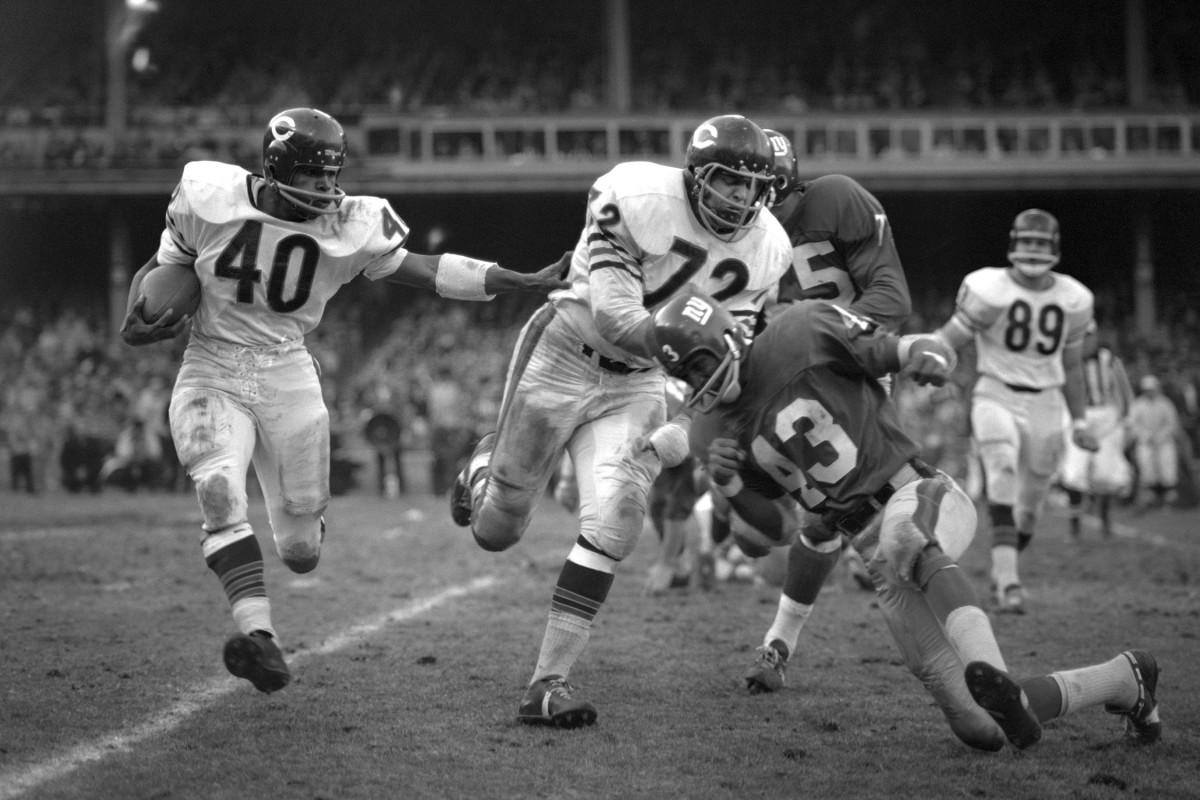
• Polian had nods to history throughout. And though he waited until the 22nd and 24th rounds, respectively, to get his two wideouts—Cris Carter and Tim Brown—both are Hall of Famers. His selection of Mike Ditka in round seven thrilled him. “He was the dominant tight end of his era, the first real offensive weapon who played detached from the line,” said Polian. “He was the [Rob] Gronkowski of his day.”
• Wooten said he wanted to draft some players he knew well from playing with and against them in his career (1959 through ’68, with Cleveland and Washington). Check out five straight Wooten picks beginning in round seven: tackle Bob Brown, center Jim Ringo, cornerback Herb Adderley, guard and teammate Gene Hickerson, guard Jerry Kramer.
• Accorsi remembered the city where he got his start in an NFL front office and became an NFL GM—Baltimore. His first three picks (Unitas, Lenny Moore, Ray Lewis) all have roots there, and 17th-round defensive tackle Art Donovan is one of the most colorful Baltimore athletes in history.
Larry Fitzgerald, who will play alongside Steve Largent as Team King’s targets for Brady, seemed to speak for a slew of the players when he said: “To catch balls from Tom Brady, to be able to practice against Night Train Lane and Lester Hayes, to be coached by Chuck Noll … this is a pretty big honor to be one of the 300 players in history drafted.”
The GMs seemed honored to be part of the project. The image of some of the combinations made possible by this draft gave it a Field of Dreams feel.
Jim Brown and Walter Payton lining up in the same backfield. Peyton Manning throwing a fade to Don Hutson. Doug Atkins and Jason Taylor coming around opposite corners to chase the quarterback. Brett Favre handing the ball to Bronko Nagurski. Dan Marino playing catch with Rob Gronkowski. Otto Graham, with his facemask-less helmet, drooling over having Barry Sanders in the backfield with him.
Unitas, kneeling in the huddle, calling a play of his choosing, looking up at Michael Irvin.
“Hey Irvin,” you can hear Unitas asking, “can you get open on Night Train Lane?”
“God ain’t made a DB who can cover me yet!” Irvin might say.
Yes, these would be some games to watch, in our dreams.
“This draft was way past fun,” said Wooten, 80 and a football lifer. “It brought back a lot of memories. And when you see my list, you’ll see it is a lot of guys I played against. It brought back so many guys that you don’t think about that were really outstanding players and people. To me, this was really joyful.”
I hope you enjoy the coverage of our All-Time Draft this week. We’d love to hear from you about it. On Tuesday, Tim Layden will have a story imagining what each of these teams would look like, assembled for the first time, and we’ll take a crack at an All-Undrafted team—can you build a squad comparable to these 12 from players who didn’t get picked? On Wednesday my mailbag column will be dedicated to the all-time-draft. Whose team do you like? Who got left out who shouldn’t have? Who drafted well? Who didn’t? (Although it’s hard to look at any of these teams and think a single one is pedestrian.)
And I’d love to know your thoughts about which team would win the title if these 12 teams played a full season.
Dan Fouts told me after the draft: “Bart Starr won five titles for the Packers, and what an incredible team that was. Five! That’s why I hope people will look at this and have some appreciation for the history of the game. So many great players didn’t get picked. People think football history started with the Super Bowl. You can see it’s been a great game for a long, long time.”
The MMQB All-Time Draft Hub | The complete draft, picks 1-300, plus coaches
Team-by-team rosters, with player bios:
Team Bussert
Team Wolf
Team Gosselin
Team Fouts
Team Turney
Team Brandt
Team McGinn
Team Horrigan
Team King
Team Polian
Team Wooten
Team Accorsi
Quotes of the Week
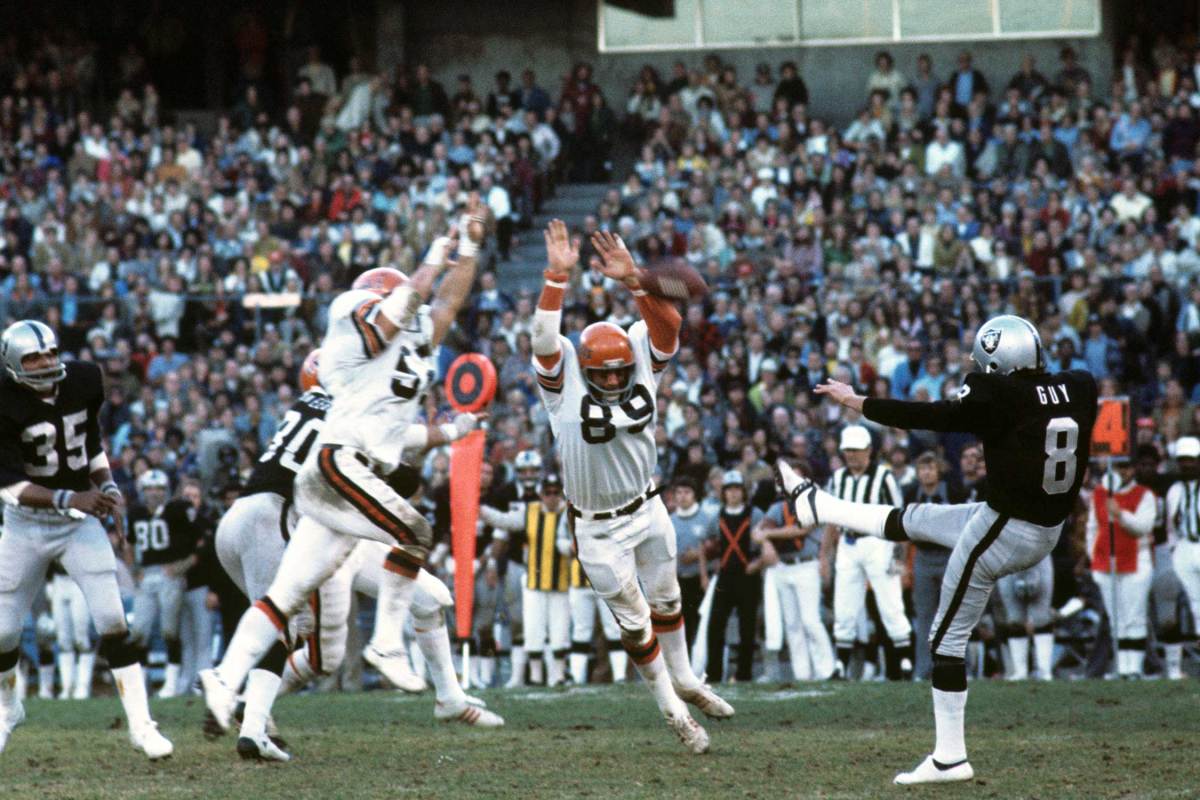
I
“Next time, we need a real commissioner. How can you be a commissioner and be a drafter? You talk about collusion, obstruction of justice, fake news? It’s all there!”
—Dan Fouts, on the conflict of interest of one of the GMs—me—being the man running the draft.
II
“I look at this draft, and what it tells me when you look at the history of this game is how much great, great talent there’s been. We didn’t really touch very much of the pre-World War II players, and that’s a lot of talented players.”
—Bill Polian.
III
“Everybody seemed to get in the spirit and had a few laughs along the way. It was enjoyable. I hadn’t drafted a football player since 1959 in my backyard in Illinois. What do I know about drafting?”
—Joel Bussert, who must know something. He ended with the best pass-rush in our draft, nabbing Lawrence Taylor and Bruce Smith in rounds one and three.
IV
“The thing that surprised me is no one picked me. I am heartbroken and distraught.”
—Dan Fouts.
V
“I should say this in defense of Dan Fouts [taking Ray Guy fourth overall]: When Bill Polian became the general manager of Carolina when they came into the league in 1995, he signed—maybe as his first two players in free agency—a kicker and a punter. He got them right away. If you aren’t going to move the ball up and down the field, you better have a good punter because that will put the other team in a hole. And if you’re not scoring a lot of points, it’s nice to have a field-goal kicker that can boot if from anywhere. My picks probably surprised some people too.”
—Bussert, on Fouts’s first-round pick.
Stats of the Week
The third-leading passer of all time in yardage—Drew Brees (66,111 yards)—was not drafted.
Numbers 9, 10, 11 and 12 on the all-time receptions list—Anquan Boldin, Reggie Wayne, Andre Johnson, Steve Smith—were not drafted.
Three of the top eight rushing leaders in history—Curtis Martin (fourth), Jerome Bettis (sixth), Frank Gore (eighth)—were not drafted.
Factoids That May Interest Only Me
I
Adrian Peterson was not drafted.
Thurman Thomas was not drafted.
Bart Starr was not drafted.
II
“This is crazy,” McGinn said. And he told a story.
The left guard on his team, Hall of Famer and former NFL head coach Walt Kiesling, was a tackle in college in the 1920s at tiny St. Thomas College in St. Paul, Minn. The guard who played next to him in college: Denis McGinn. Three decades later, Denis McGinn had a son, Bob, who used to look at St. Thomas photos of his smallish dad and the mountainous (at that time) Kiesling. Bob McGinn became a football player, a huge fan, and a journalist who covered the Packers for 38 years.
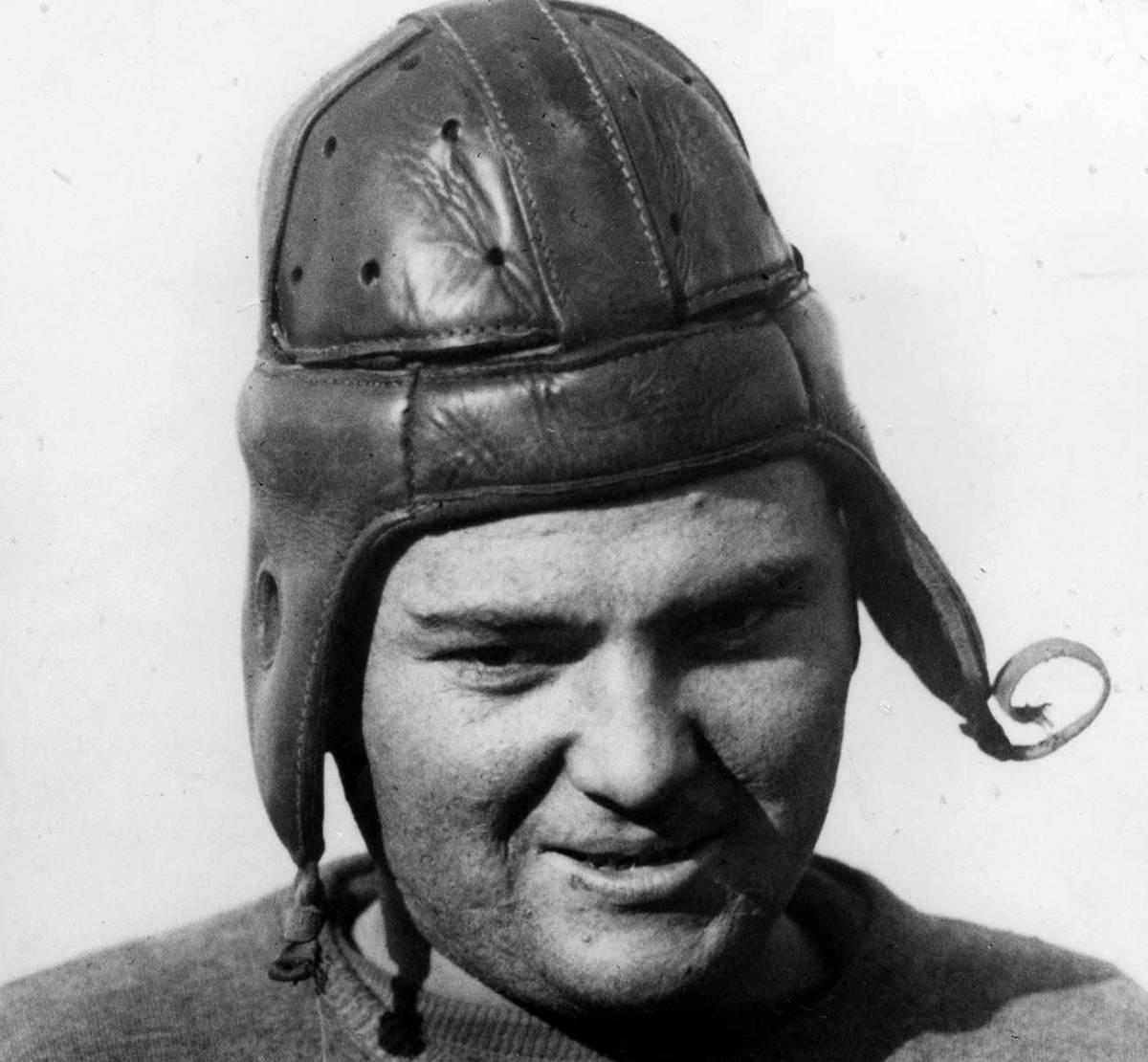
“When Kiesling was the coach of the Steelers, and my dad lived in Upper Michigan, he would always take my older brother down to games in Green Bay when Kiesling was coaching,” Bob McGinn said. “My dad and my brother told me that they’d go into the locker room and see Walt before and after the game. So I’m excited for posterity and family ties to have him on this team.”
McGinn picked Kiesling in the 25th round.
Ten Things I Think I Think
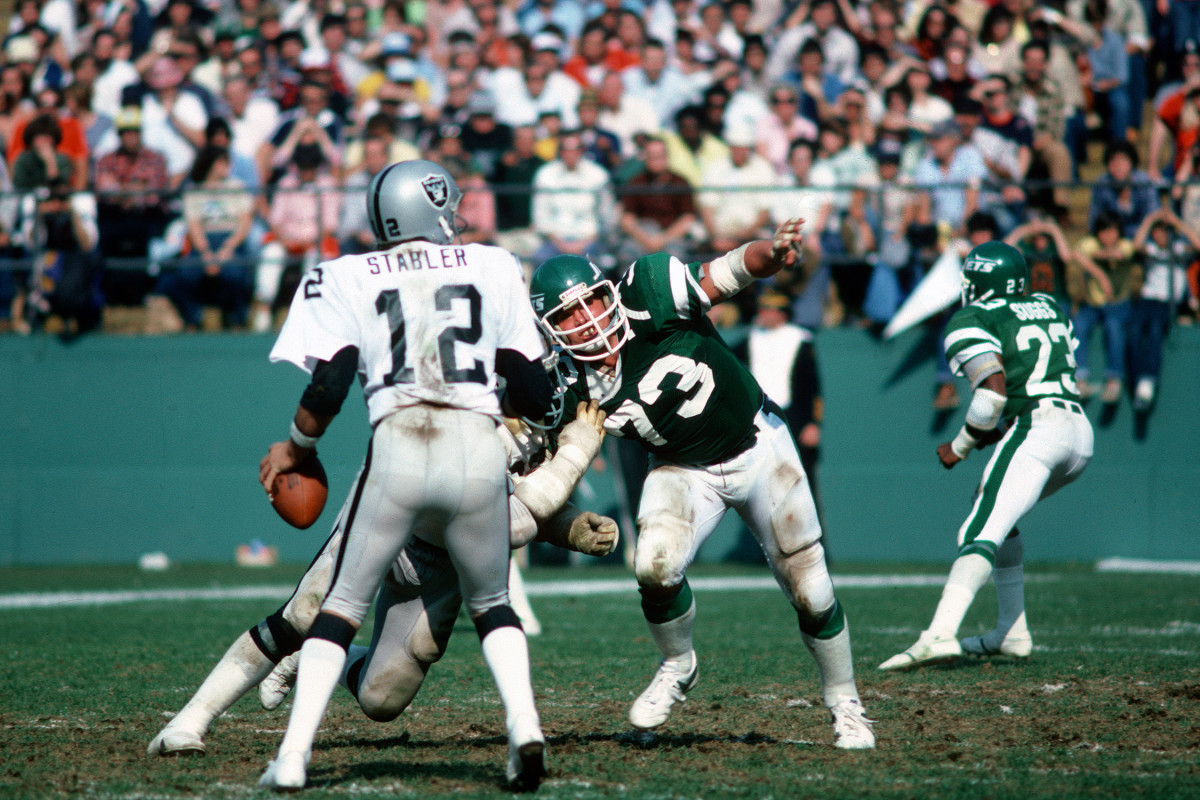
1. I think without question Dan Fouts picking Ray Guy and Jan Stenerud in rounds one and four will be what people who don’t like this concept point to when they critique it. That’s fine. And people might say, “How can you judge players from different eras and put them on the same team, and …” I know. There’s nothing perfect about the concept. It’s just fun. Just a little bit of summer fun, imagining scenes like the best center of football’s first 50 years, Mel Hein, snapping the ball to the wildest quarterback of the game’s 98 years, Brett Favre.
2. I think you’ll enjoy looking at who was drafted where … such as Jerry Rice not being the first wide receiver taken. Let’s think about that for a moment. Don Hutson (Green Bay, 1935–45) went eighth. Rice went 17th. If you’d had a seat at the table, maybe you’d have picked Rice first overall—and no one could have beefed if you did. But let’s consider Hutson. When he retired after the 1945 season, he had exactly three times as many touchdown catches (99) as the receiver with the second-most touchdown catches in NFL history (Jim Benton, Cleveland, 33). Hutson’s record stood for 44 years, until Steve Largent broke it in 1989. Thus the reverence for Hutson. Plus, for those who would question the athleticism of player in those days (fair, seeing that the color barrier in pro football was not broken until the year after Hutson retired, meaning that it’s virtually certain he played against less than the best players), Hutson did run a 9.8-second 100-yard dash, and he did twice win the 100-yard dash in the SEC Track and Field Championships. Rice versus Hutson is the classic case of apples versus oranges, and it’s not wrong to pick either as the greatest receiver of all time.
3. I think I’m not sure who will be angriest at this draft—Emmitt Smith for being the 16th back taken, or Thurman Thomas for not being picked at all.
4. I think three things about Ernie Accorsi’s team:
a. Vince Lombardi should lord over the squad, obviously, and have his fingerprints all over the offense. But if I were him, I’d give cornerback Dick LeBeau the player/coach title and let him game plan the defense every week.
b. I wonder what’ll happen when one of Lombardi’s pass-rushers, Michael Strahan, walks into the head coach’s office one day and says, “Hey coach! I’d love to get you on Good Morning America. How about it?”
c. Lombardi’s going to love the mack truck of a running back that is Marion Motley. Will he ever let John Elway throw the ball with Motley plowing for first downs?
5. I think the draft was occasionally a draft of runs. Such as: There was one tackle (Munoz) taken in the first 60 picks. There were eight picked between the 61st and 72nd selections. And after one linebacker (Taylor) going in the top 25, eight went in the next 20 picks.
6. I think some of those players shy of the Hall of Fame will be encouraged with where they went: special-teamer Steve Tasker at 184, versatile defensive lineman Joe Klecko at 186, and wideout Cliff Branch at 194. All were chosen before Troy Aikman, Bronko Nagurski and Tony Dorsett. And Jerry Kramer, whose candidacy has been the cause of much debate, was the first non-Hall of Famer (among those eligible) who was taken in this draft, at 131.
7. I think these are the coach/player situations that would be so fun to see:
a. John Madden coaching Lawrence Taylor. I have a feeling Madden would do what Bill Parcells did: Give LT enough rope, but always make it known to Taylor that there were limits on how hard he could pull.
b. GM John Wooten made an incredible trio come back to life … coach Bill Walsh reprising a cold day in St. Louis in December 1979, when rookie quarterback Joe Montana started his first NFL game, and an on-his-last-legs running back, O.J. Simpson, played in the Niners backfield. Those three men—Walsh, Montana and Simpson—lead the Wooten offense.
c. Paul Brown coaching Johnny Unitas. Fantastic. The problem: Brown wanted power over his offense, and Unitas wanted total control over the play-calling. Of all the stories in Week 1 of The MMQB League, the Brown/Unitas dynamic would be the most interesting to see.
d. Chuck Noll coaching a trio of Steelers on D: Jack Lambert was his fearless leader on the Steel Curtain … but I’d love to see Troy Polamalu and Kevin Greene playing for the old man. And how much would Noll have loved the multiple ways he could have floated J.J. Watt around his defensive front?
e. Curly Lambeau, the first bombs-away coach in NFL history, finding ways to have fun with Brett Favre’s arm and daring.
8. I think one of the things I’d be watching for early in this league would be special-teamers Steve Tasker (Fouts’ wild-card pick, in the 16th round) and Steve Gleason (a King wild-card in the 20th) rushing the punter. Those plays would be worth the price of admission right there.
9. I think I want to thank my 11 other GMs in this process. I fielded 20 or so calls and emails in the weeks before the draft, clarifying rules and enthusing about how much fun they were having prepping for the draft. Gil Brandt, in particular, was so fired up about the process. John Wooten too. I just appreciate so many busy people making time to have the ultimate fantasy draft. I hope you all enjoy it.
10. I think these are my non-football thoughts:
a. I think you’ll notice some changes to our website beginning today. This week The MMQB transitions to the content management system used by SI.com and other Time Inc. sites, part of a general move by our parent company to consolidate digital platforms. The change will provide The MMQB with more flexibility regarding the site’s functionality and allow us to take advantage of a wider range of features; we’ll also be able to make fixes and improvements to the site more quickly, providing a better user experience for The MMQB’s readers. In conjunction with the move, The MMQB will now become the single umbrella site for all of Sports Illustrated’s NFL coverage. We’ll continue to produce the features, columns and video content you’ve come to expect from The MMQB and its staff over the past four years, and we’re now adding to that the coverage that traditionally ran on SI.com—features and analysis from Jonathan Jones, Chris Burke, Tom Taylor and others, longform stories from Sports Illustrated magazine, Michael McCann’s legal coverage, plus breaking news, scores and more. We’re excited about the potential for more expansive and robust NFL coverage on the site, for the 2017 season and beyond. Let us know what you think at talkback@themmqb.com.
b. Story of the Week I: A great one, and one I haven’t pondered in almost 40 years, by Khadeeja Safdar of the Wall Street Journal: Who pays on the first date? As Safdar writes, no one knows … and some of the weasely men in this piece give me the creeps.
c. Story of the Week II: Insightful work by Jeffrey Toobin of the New Yorker on the connection between the president and the National Enquirer.
d. Coffeenerdness: I recently went eight straight days using Rewards points at Starbucks for my daily four-shot macchiato. When you drink as much coffee as I do, and save as many points over six months or so as I did, that’s not much of a surprise, I don’t imagine.
e. Beernerdness: I wrote part of this column on a trip to Los Angeles, and I was fortunate to have 45 spare minutes at LAX in the new Delta Terminal one evening. (Has anyone ever said he was fortunate to have 45 minutes to kill at LAX?) The Angel City Brewery has opened a little brew pub in Terminal 3, and the Citrus Wheat Ale (Angel City Brewery, Los Angeles, and you know it’s an L.A. place because the brewery has a 213 area code) is perfect. Flavorful, with just a hint of citrus, the way good wheat beers should be.
f. Best movie I’ve seen in a while: “The Big Sick,” a romantic/teary comedy/life-tale. Really moving, really funny in spots. Ray Romano is wryly hilarious, and Holly Hunter a great mom, and Zoe Kazan, whom I’d never heard of, terrific as the love interest. But Kumail Najiani, the thirtyish protagonist (who nearly turned antagonist) is great in this real-life story navigating love with a cool American while his Pakistani parents want him to live by their arranged-marriage ethos. I laughed, I cried, I was touched. Two well-spent hours.
g. “Veep” disappointed me this year. A little gross at times, with some shows pretty far out in left field (such as the veer to Alabama for Gary’s 40th birthday party, which was wholly uninteresting). And it’s coming back. I don’t know about that.
h. I’ve got a few more days free before I hit the training camp trail on Tuesday, July 25. So the column next Monday will be manned by The MMQB’s Robert Klemko, who will do some camp preview stuff, among other things. After my mailbag this week, I’ll be back on the site beginning Wednesday, July 26.
i. Remember: Visit the The MMQB All-Time NFL Draft hub for the full 1-300 draft results, plus rosters, bios, analysis, matchups and more. Your thoughts, teams, rips, kudos on this draft will make up Wednesday’s mailbag. Hit me up at talkback@themmqb.com.
The Adieu Haiku
Marino. Round 10.
Crazier talk? Adrian
Peterson not picked
• Question or comment? Email us at talkback@themmqb.com.
